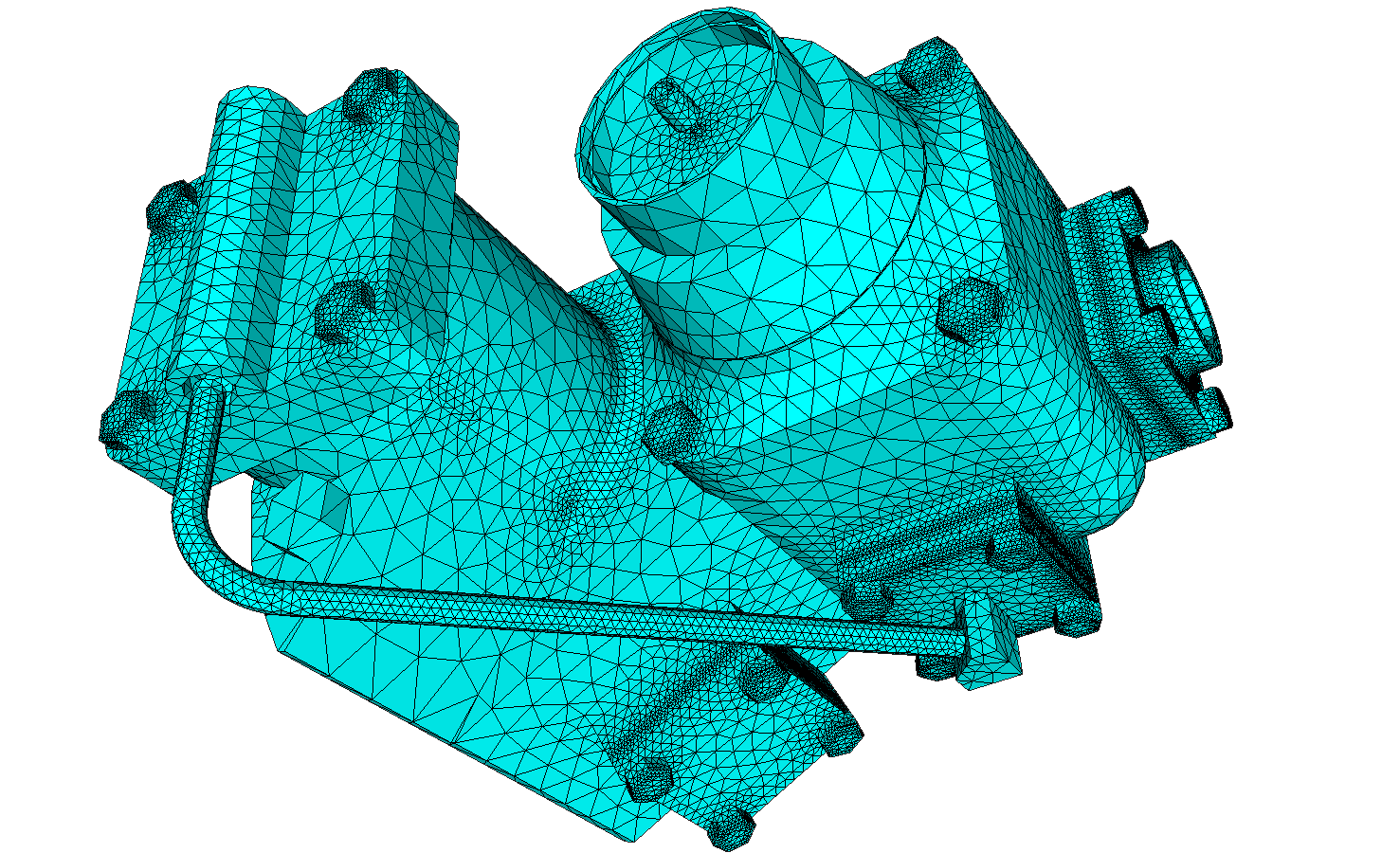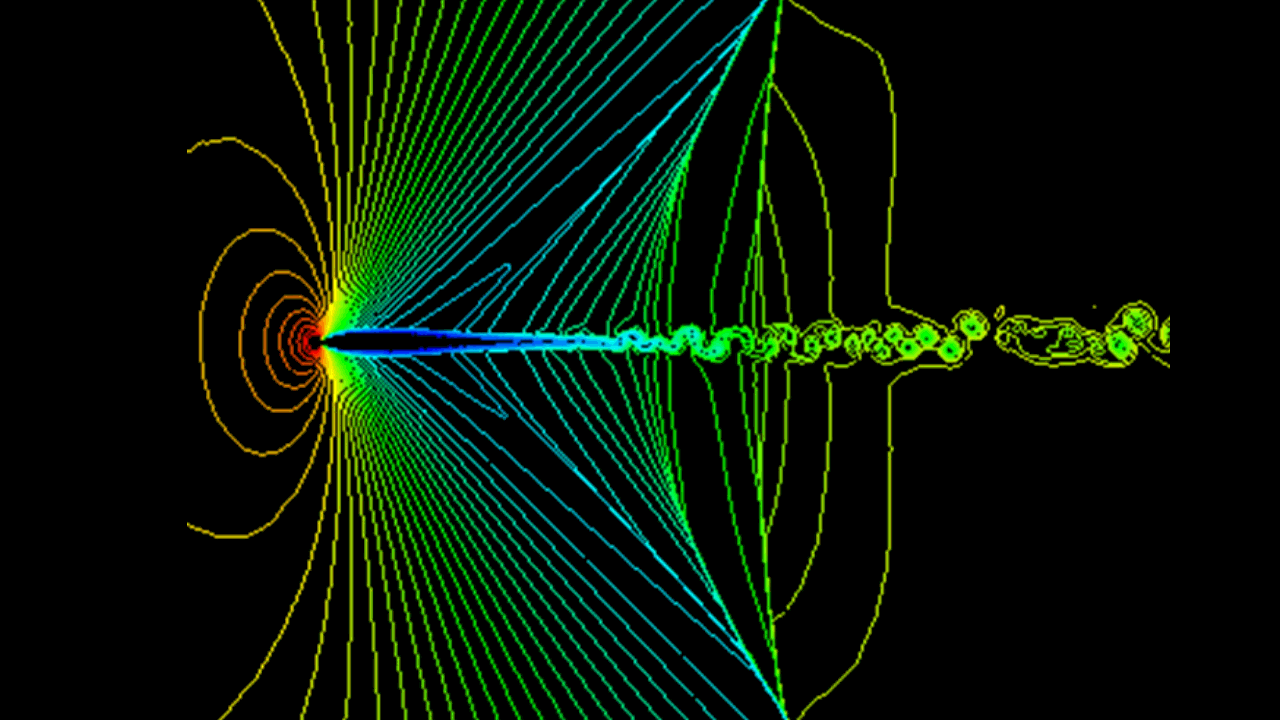In much the same way as physical design has moved from paper 2D drawings to 3D models in software, so has analysis. Designers and manufacturers are rapidly moving away from physical models to perform analyses, such as structural integrity or airflow, in order to shorten design and optimization time, while dramatically improving both the performance and costs of their results. The processes used for analyses require that the model be discretized into approximations, so that the mathematic equations can be solved at an appropriate scale. Instead of analyzing the interactions of every molecule, these approximations are appropriately scaled to reduce analysis time, while still ensuring the product meets the required specifications.
Meshing is Key
Meshing technology is key in bridging the gap between detailed 3D models and analysis. Meshing creates surface and volume approximations constructed of a mesh of polygons and polyhedra. This representation preserves sufficient details required for the numerical solver used by software simulations, such as fluid dynamics (CFD), electromagnetic modeling (CEM) and structural analysis (FEM). In the past, meshing in such applications was performed by expert systems that required detailed interaction by end users. The iterative cycle of optimization — design modification, re-meshing, simulation — could take weeks to complete. Therefore, finding an automated process that optimizes the mesh for downstream computations is key to shortening the design-analysis loop.
Make vs Buy
While developing an in-house solution can provide control to the developer, leveraging software development toolkits (SDKs) enables developers to spend time on features and functionalities that will provide market differentiation, rather than spend time and energy reinventing solutions — a solution, that although custom, does not benefit from years of development time nor has the robustness gained through the experience of a large end-user base. The development team at Spatial faced the same decision when it came to meshing components — do we spend development resources on creating our own solution, or look to a supplier with a proven track record in the industry? We followed our own advice for 3D Precise Mesh and partnered with Distene, the leading developer and supplier of meshing software components and technologies.
By using meshing components from Distene, Spatial gains access to robust technology and more than 20 years of meshing heritage, delivering that same technology to our customer base. The self-contained meshing components from Distene can be easily integrated into an end system, providing end users access to a reliable solution, validated via a large and growing database of models. This robust meshing technology not only accelerates, but also automates the process, while improving the overall quality of the resulting mesh.
With support for parallelized meshing, 3D Precise Mesh shatters the limits for model size, enabling large-scale simulations not previously feasible in a typical engineering environment.
Enter Precise Mesh
3D Mesh provides an integrated 3D modeling and meshing capability that bridges the CAD-to-solver gap. Creating meshes directly from 3D boundary representation models, 3D Precise Mesh generates extremely accurate surface and volume meshes for downstream analysis. 3D Precise Mesh can:
Create surface meshes from native CAD, as well as discrete geometries; e.g., from stereolithography (STL) files
Generate volume meshes using both tetra- and hexahedrons
Perform additional mesh processing, including mesh cleaning, optimization, and remeshing
Generate automatically the suitable mesh for FEA, CSM, CFD, and CEM analysis
What Does 3D Precise Mesh Offer
Reduced Development Time
Already integrated with the CGM Core Modeler and 3D ACIS Modeler, 3D Precise Mesh adds high-end meshing capabilities that allow your developers to focus on the competitive differentiators of your analysis and simulation applications.
Bespoke Meshes
3D Precise Mesh provides high-quality automatic meshing solutions, with the flexibility for detailed mesh refinement, so that your analysis and simulation applications deliver the optimal solution to your users.
Available Today
Customers using Spatial’s CGM Core Modeler and 3D ACIS Modelers can gain access to Distene meshing components today through Spatial with 3D Precise Mesh.




















